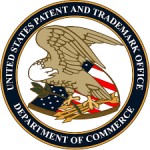Farm-to-table has become a popular dining concept over the last twenty years, yet the broader food and beverage industry still needs more transparency in many areas. A larger movement is now emerging to bridge this information gap, driven by consumer demand for deeper insights into the food they consume. However, a few simple technology-based solutions can make transparency possible within food distribution.
Why Consumers Want Transparency in Food
Today’s consumers are increasingly conscious of their food choices. They want to know precisely what they’re eating, where it comes from, and how ethical and sustainable it is. This growing interest in transparency is reshaping the food industry, so much so that consumers are willing to pay more for transparency from brands and even forgo buying from those that only share limited information. Luckily, technology is making it possible to meet these expectations.
According to research by NielsenIQ and the Food Industry Association, two-thirds of shoppers are willing to switch to brands that provide detailed product information. While nutrition and ingredients remain crucial, 80% of respondents said values-based details, like certifications and allergen information, also play a major role in purchasing decisions.
Some brands may hesitate to invest in transparency due to cost concerns. However, according to this DNV-GL survey, 69% of consumers are willing to pay more for products with clear quality and safety certifications. Additionally, 53% want more explicit information on food safety, content, and hygiene. These demands cultivate greater trust and loyalty, as brands prioritizing transparency often benefit from stronger consumer relationships and long-term results.
Leveraging Technology for Greater Food Transparency
Shoppers, online or in-store, are looking for a wide variety of information about food products, from nutritional data to sourcing, manufacturing processes, country of origin, and logistics data.
So, how can brands deliver better food transparency? As with many others within the supply chain, brands are turning to technology, using solutions like RFID tags, blockchain, data analytics, precise labeling, augmented reality (AV), and virtual reality (VR) to provide insights across the supply chain. Below are five of the most impactful ways these technologies are being used to enhance transparency and meet consumer expectations.
1. RFID Tags for Real-Time Traceability: Radio frequency identification tags enable detailed tracking for end-to-end transparency and traceability. Each RFID tag can store critical data, including timestamps, product descriptions, and even temperature and humidity levels. Consumers can scan RFID tags to access key information about a product’s origins, nutritional content, and any additives. In addition to giving consumers valuable insights, RFID can help prevent cross-contamination and foodborne illnesses, reducing waste and minimizing recall costs.
2. Blockchain for Secure and Transparent Records: Blockchain, a secure digital ledger, is being used to add transparency throughout the food supply chain. This technology allows items to be tracked from seed to store and offers a reliable record for certifications, such as organic labels. With blockchain, processors, distributors, and retailers can all independently verify product information, maintain accurate inventory, and prevent fraud. By sharing this data, food distributors can comply more easily with safety regulations and improve consumer confidence.
3. Using Data to Anticipate Risks: Advanced data analytics also helps companies monitor risks that could impact the food supply. For instance, advanced insights allow businesses to analyze market conditions, assess regional instabilities, and predict environmental challenges that could disrupt food production or transportation. Farmers, too, are using data-driven insights to optimize harvest times and minimize risk, creating models that others can replicate to improve efficiency and resilience.
4. Ensuring Accurate Labeling: Accurate labeling is a cornerstone of transparency in the food industry, providing consumers with the information they need to make informed choices. Whether identifying organic versus non-organic products, highlighting allergen warnings, or verifying sustainability certifications, clear and correct labeling builds trust and prevents confusion. However, manual labeling processes are prone to errors, leading to consumer dissatisfaction, regulatory penalties, and health risks. Tools like mobile-powered workstations are being integrated into food production and distribution environments that enable employees to access real-time data and print labels directly at the point of need, reducing reliance on static labeling stations and minimizing the risk of errors caused by outdated or misplaced information. These technologies enhance accuracy and operational efficiency, allowing businesses to streamline processes and maintain compliance with food safety standards. For consumers, this results in greater confidence in the products they purchase and the assurance that their choices align with their health, ethical, and sustainability goals.
5. AR and VR in Retail: AR is a type of technology that has the potential to revolutionize how customers shop for products by combining physical stores and virtual spaces. With AR, shoppers can scan products using smartphones to instantly view details like ingredient origins, sustainability certifications, and allergen information. This provides an interactive way to access nutritional information and understand the environmental impact of their choices, such as where the ingredients were sourced, the producer’s fair-trade practices, or the product’s carbon footprint.
VR takes transparency a step further by offering immersive experiences. A recent study using VR in grocery stores showed that, over time, participants who used the headset to navigate the store and buy groceries significantly increased their ability to buy healthier food and products by almost 50% compared to those who did not use a VR headset when shopping. This suggests that VR can help significantly enhance an individual’s overall health by allowing for more informed decision-making. Some stores are building virtual shopping environments, allowing customers to explore and shop for products from home while accessing the same in-depth product information. Shoppers can view this interactive data as overlays on their screens while navigating grocery aisles, paving the way for a more informed, engaging, and transparent grocery shopping experience that meets the growing demand for food knowledge and sustainable choices.
Empowering Informed Choices
As food and beverage companies strive to uphold rigorous safety and quality standards, they’re embracing innovative technologies to better balance sustainable, ethical practices with the growing expectations of informed consumers. In a world where consumers increasingly want to know how their food is sourced, produced, and transported, technology is making that information accessible and revolutionizing transparency within the food supply chain.
As transparency becomes a core principle in the food industry, these technologies empower consumers to make more responsible choices, fostering a stronger connection between buyers and brands. Embracing these tools also allows companies to earn trust, build loyalty, and stand out in a competitive market that increasingly values openness and accountability.







